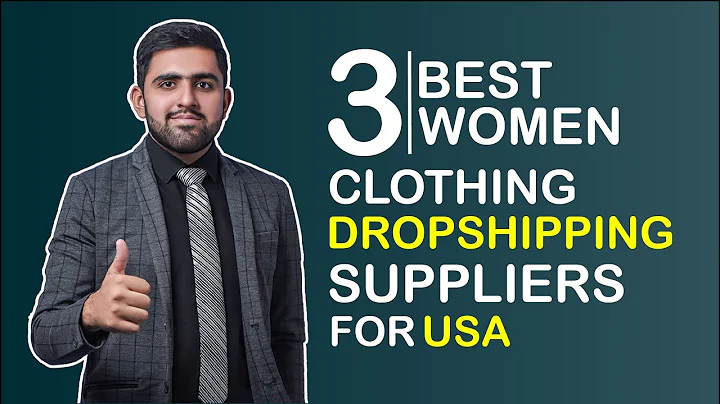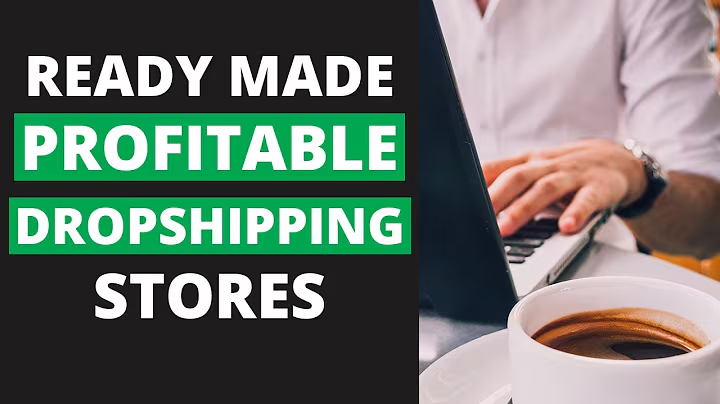Start Dropshipping With No Money
Table of Contents
- Introduction
- Finding a Winning Product
- 2.1 Product Research on Amazon
- 2.2 Checking Interest with Google Trends
- 2.3 Finding a Supplier on AliExpress
- 2.4 Analyzing Competitors
- Setting up Your Shopify Store
- 3.1 Signing up for a Shopify Account
- 3.2 Designing Your Website
- Driving Traffic to Your Store
- 4.1 TikTok and Instagram Organic Traffic
- 4.2 Google Shopping Ads
Introduction
In this article, I will guide you through the process of starting a dropshipping business in the most cost-effective way possible. Starting a dropshipping business requires careful consideration of various elements, such as finding a winning product, designing your website, and driving traffic to your store. I will provide step-by-step instructions on how to tackle these tasks with the least amount of money, based on my own experience in growing successful Shopify stores. So, let's dive in and discover how you can launch your dropshipping business without breaking the bank.
Finding a Winning Product
2.1 Product Research on Amazon
One of the first steps in starting a dropshipping business is finding a winning product. To begin your product research, head over to Amazon. Although you may not be dropshipping on Amazon, it serves as a valuable resource to identify popular products. Visit the "Best Sellers" section in your desired product category to get an idea of what items are currently in high demand. For example, if you select "Electronics and Photo," Amazon will display a list of top-selling electronic items. This information will give you insights into the type of products you can potentially dropship by finding similar items from your dropshipping supplier.
2.2 Checking Interest with Google Trends
After identifying a potential winning product on Amazon, it's essential to gauge public interest. To do this, navigate to Google Trends and enter the product keyword. Google Trends will show you the search interest over time for that specific keyword. Analyze the data to see if there is consistent interest in the product. This information will help you determine the optimal time to build a store around that particular item. By understanding the demand, you increase your chances of success in the market.
2.3 Finding a Supplier on AliExpress
Once you have confirmed the potential of your product, it's time to find a supplier who can source it for you. While AliExpress is not the only dropshipping supplier out there, it is one of the most widely used and accessible platforms. Use the search function on AliExpress to look for the specific product you identified on Amazon. The search results will display various options and suppliers. Pay attention to the delivery time offered by each supplier as it plays a crucial role in customer satisfaction. Choose a supplier that can deliver the product within a reasonable timeframe, preferably within 15 days.
2.4 Analyzing Competitors
Before finalizing your product selection, it is crucial to check if other entrepreneurs are dropshipping the same product. This step will help you understand the competition and pricing strategies. Look for similar products on Shopify stores or other e-commerce platforms. Analyze the pricing and profit margins of these competitors. By examining their approach, you can determine if the product is profitable and if there is room for you to enter the market. Consider adjusting your pricing and adding unique value to differentiate your store from competitors.
Setting up Your Shopify Store
3.1 Signing up for a Shopify Account
With a winning product and supplier in mind, it's time to set up your Shopify store, the foundation of your dropshipping business. Start by signing up for a Shopify account. To make the most of your budget, take advantage of the trial period offered by Shopify. By using the trial link provided in my description, you can enjoy three months of Shopify usage for a nominal fee of one pound or one dollar. This significant cost saving allows you to allocate more resources to other aspects of your business.
3.2 Designing Your Website
Designing a visually appealing and user-friendly website is crucial for attracting and retaining customers. While hiring a website designer is an option, it may not be cost-effective for those with a limited budget. Fortunately, Shopify offers a range of free themes that you can customize without any coding knowledge. Browse through the available themes and select one that aligns with your product and brand. Once you've chosen a theme, you can easily add and modify content, images, and sections to create your unique storefront. Use a website like Pexels.com to find high-quality, royalty-free images that complement your product and enhance the overall aesthetics of your website.
Driving Traffic to Your Store
4.1 TikTok and Instagram Organic Traffic
Generating traffic to your store is essential for sales and business growth. While there are various ways to drive traffic, organic methods can be cost-effective, especially for those on a budget. TikTok and Instagram are platforms where you can leverage organic traffic by creating content centered around your product. Consider posting videos and images of your product or related content daily. Building a consistent presence and engaging with potential customers can increase the chances of conversion. Although organic traffic may be unpredictable, it can be an initial strategy to gain your first few sales while developing a long-term marketing plan.
4.2 Google Shopping Ads
Another effective traffic generation method is utilizing Google Shopping Ads. These ads appear when customers search for specific products on Google, increasing the likelihood of making a sale. Setting up a Google Shopping Ad campaign requires careful consideration of your daily budget. Contrary to popular misconceptions, Google Ads can be affordable if you start with a conservative budget and gradually increase it as you generate sales. By reinvesting profits into your advertising budget, you can scale up your campaign and attract a higher volume of potential customers to your store.
In conclusion, starting a dropshipping business on a budget is possible with the right strategies and approach. By conducting thorough product research, finding reliable suppliers, and creating a well-designed Shopify store, you lay a solid foundation for success. Combine organic traffic methods like TikTok and Instagram with Google Shopping Ads to generate traffic and increase sales. Remember to continually optimize and adjust your strategies based on consumer trends and market demands. With perseverance and smart budgeting, you can build a thriving dropshipping business without breaking the bank.
FAQ
Q: How much money do I need to start a dropshipping business?
A: The amount of money needed to start a dropshipping business can vary depending on various factors such as product selection, marketing strategies, and website design. However, with careful budgeting and cost-effective approaches, it is possible to start with a minimal investment.
Q: What are the advantages of dropshipping?
A: Dropshipping offers several advantages, including low startup costs, no need to hold inventory, and the ability to operate from anywhere with an internet connection. It also allows for a wide range of product selection and scalability.
Q: How long does it take to be profitable in dropshipping?
A: The time it takes to become profitable in dropshipping can vary. It depends on factors such as product demand, competition, marketing effectiveness, and overall business strategy. With consistent effort and effective implementation, profitability can be achieved within a few months.
Q: Can I dropship products from multiple suppliers?
A: Yes, it is possible to dropship products from multiple suppliers. However, it requires careful inventory management, efficient order fulfillment, and clear communication with your suppliers to ensure a smooth operation.
Q: Should I focus on a niche market or offer a wide range of products?
A: The decision to focus on a niche market or offer a wide range of products depends on your target audience and business goals. While a specific niche can attract a dedicated customer base, offering a variety of products can cater to a broader range of customers. Consider your target market and competitive landscape when making this decision.



















